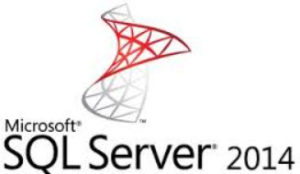
Before you get too excited about Always-on AGs, the application you want to use must support AGs. This is becoming more common, since AGs were introduced with SQL 2012. However, products like vCenter do *not* support AGs. If you want VMware products to support AGs, then I urge you to make your business case to your VMware account manager. Customer input can make a difference in what gets supported. Even as of vSphere 6.0, AGs are not on the roadmap to be supported. Let’s try and change that!
Most VMware administrators are probably not SQL DBAs, and may never have fully configured Always-on AGs. I am most certainly not a DBA nor a monster VM expert, but I have installed more SQL servers than I care to remember. I try and follow best practices (or contravene them where it makes sense), and not just do a bone headed click-next install. So to that end, this series of posts will be how to install SQL Server 2014 Enterprise Edition on Windows Server 2012 R2 Standard using Always-On Availability Groups. For an authoritative source on virtualizing SQL server, check out the new book called Virtualizing SQL Server with VMware. I’ll incorporate some of their recommendations into this series, but will by no means cover everything. This series is intended to get you up and running, and not do anything stupid. It’s not designed to support your mission critical tier-1 workloads without modification by your professional DBAs.
People may be apprehensive to virtualize SQL server, probably due to some bad past experience. I would dare to say those bad experiences are due to human induced issues (poor planning, over subscription, not following best practices, no tuning, etc.) and NOT due to the virtualization layer. Today the technology is not the limitation in virtualizing tier-1 workloads. Period. For a true tier-1 SQL deployment be sure to read the book I mentioned above, cover to cover.
What to Expect
This is no click-next installation. Covered in this series will be:
- Some virtualization best practices
- Windows firewall configuration
- SQL SSL certificates
- Configuring e-mail alert notifications
- Implementing maintenance/backup plans
Blog Series
SQL 2014 Always-on AG Pt. 1: Introduction
SQL 2014 Always-on AG Pt. 2: VM Deployment
SQL 2014 Always-on AG Pt 3.: Service Accounts
SQL 2014 Always-on AG Pt 4.: Node A Install
SQL 2014 Always-on AG Pt. 5: Unattended Node B
SQL 2014 Always-on AG Pt. 6: Cluster Configuration
SQL 2014 Always-on AG Pt. 7: TempDB
SQL 2014 Always-on AG Pt. 8: Max Mem & Email
SQL 2014 Always-on AG Pt. 9: SQL Maintenance
SQL 2014 Always-On AG Pt. 10: AAG Setup
SQL 2014 Always-On AG Pt. 11: File Share Witness





Derek – Vmware KB 1037959 stated that SQL Always on AG's for Windows 2012 and 2012 R2 are supported. Strangely they do not state the SQL versions supported.
Yes that is true, but what I'm referring to is supporting AGs for the vCenter database. Not the generic usage of AGs on vSphere, which is currently supported.
The book you mention is not worth reading! Having been a long time follower of Brentozar, who is a sql expert by trade, his book review on Amazon highlights many points that really should be considered before purchasing this book. This book is simply not factually correct on a large number of issues. Page 309 – the high availability chart shows pre-SQL-2012 clustering and SQL-2012+ clustering as having different recovery point objectives. (They don't – they just have different marketing names.) It says database mirroring, AlwaysOn Availability Groups, and failover clusters fail over in less than three seconds – that's… Read more »